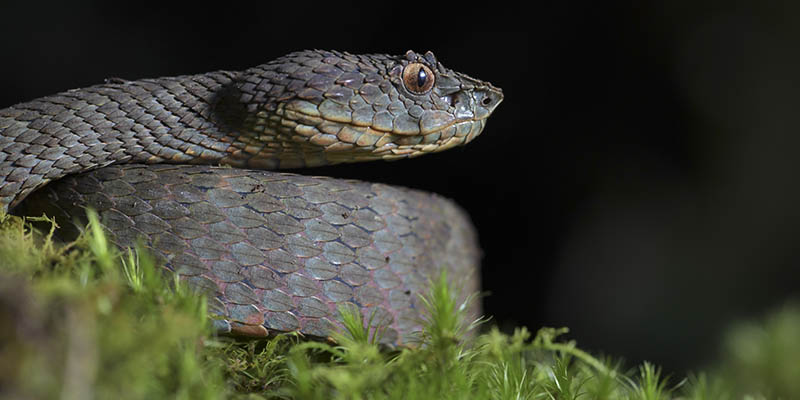In Colombia, most of the rural landscapes are highly varied due to the diversity of the productive systems, where an agricultural matrix, which can sometimes lead to isolated remnants or restricted areas, generally surrounds the forests. This has generated an increase in encounters with wild animals, most of which are snakes. Snakes as a species today suffer many unfortunate consequences due to little knowledge and/or miseducation that ends up with them being killed, which not only decreases there numbers, but also effects the ecological services provided by them such as the biological control of other animal populations that can become harmful to crops and/or reservoirs of diseases.
Through educational workshops that seek to publicize the ecology and the multiple benefits of this species that fascinates some, but terrifies many, some institutions and organizations use education as a fundamental tool in order to provide rural communities with the knowledge that allows for the conservation of snakes.
So far, few studies and environmental education programs are widely available that promote greater knowledge about snakes in Colombia, especially in rural areas where encounters with these species are even more frequent. That is why in our first blog we wanted to recognize special organizations such as Chinampa, the semillero of investigation of Amphibians and Reptiles of Unisarc (Rural and Agricultural University of Colombia), the Yoluka foundation, the National Serpentarium Foundation, among others; that in a timely manner have involved in their scientific studies that component of environmental education that has been scarce in our country.
The focus of these organizations is working in rural areas, where they seek to teach the community in a practical way about the great biodiversity present in their territories and the responsibility that each of them has to preserve it. For example, in the case of snakes, nearly 3700 species are known, of which about 319 live in Colombia. However, populations of many species present in the country have been altered due to the expansion of the agricultural frontier and the indiscriminate killing conducted by peasants or farmers. A study conducted by John Douglas Lynch in 2012 indicates that the number of killings by Colombian field workers reach at least 109 million specimens per year, being the most latent threat along with the destruction of the habitat, which is largely due to the lack of information and the fear inflicted by snake-like accidents, which also extend to other snake species that are not dangerous.
With this in mind, the urgent need to carry out studies and programs to broaden knowledge about snakes is highlighted through these studies and are accompanied by environmental education programs that make it possible to publicize the results of research and thus generate strategies to promote the conservation of biodiversity and natural resources. According to Carlos Galvis, a biologist from the Cali Zoo: "they were already here, we are the ones who invaded their territories".
One of the pillars of Birding and Herping is the conservation of wild fauna and flora; particularly the amphibians and reptiles, which are two biological groups that we are passionate about. Promoting conservation through strategies such as environmental education is part of our commitment to the Biodiversity of Colombia.
We invite you to like and follow the below organizations and groups:
The of Organización Ambiental Chinampa at https://www.facebook.com/organizacionambiental.chinampa
The Research Seedling of Amphibians and Reptiles of Unisarc (Rural and Agricultural University of Colombia), https://www.facebook.com/invetigacionherpetologia/?hc_ref=ARSPTJytnGc-z4NWcJ_qcYytp0nZ5FKH8g58HOeuWmTOSHrK-k4-ZDBDxbTTo_-fzuM&fref=nf
The Yoluka Foundation, at https://www.facebook.com/yoluka.org.co/
The National Serpentarium Foundation http://www.serpientesdecolombia.com/


